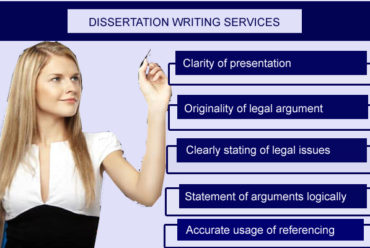The welfare state as agent of immigrant economic incorporation
Introduction to the welfare state
Faced with significant economic, demographic, and political turbulence worldwide, the adaptation and survival of the modern welfare state has garnered a wealth of academic attention in Europe and North America in recent years. The restructuring or recalibration of long-established social policies and citizenship rights in the last two decades has been generating intense debate among scholars, as global economic markets expand at a fast clip, mothers’ participation in the paid labor force rapidly approaches the rate of men, and the numbers of elderly needing care and financial support skyrockets, among other trends. dissertation writing services uk
Concomitant policy reforms, both large and small, have raised new questions about the efficacy of existing scholarly models for understanding these potentially destabilizing, yet also opportunity-laden, developments for welfare states at the turn of the 21st Century.

Family leave and welfare reform policies touch on some of the most critical issues concerning welfare states today, highlighting how concerns over the impact of recent demographic trends and international economic pressures connect with national social policies that were developed decades earlier in a much different climate; how new conflicts over gender, race and class intersect with government programs; and how the upsurge of conservative movements affects social citizenship rights.
Background of Welfare State
the Welfare State and Social Care Advocacy Despite considerable cross-national variation among welfare states with regard to their origin and development over time, the general purpose of the welfare state model has historically been to create a national social protection system for citizens to manage societal risks such as sickness, old age, disability, poverty, and unemployment through social insurance and public assistance.
Given the masses of people affected and the citizenship rights at stake in the turn-of-the-Twentieth-Century restructuring of the array of social policies and services that comprise the modern welfare state, scholars have expressed concern about how recent changes might affect its traditional functions. These include the welfare state’s role in promoting equality through income redistribution and macroeconomic controls;2 encouraging citizen empowerment and cross-class solidarity via shared, universal benefits and contributions designed to “decommodify” workers in market economies; and maintaining the “postwar compromise between capital and labor” manifested in policies of “full employment, stable prices, welfare programs, and automatic wage increases.”
What’s Driving Social Change in Modern Welfare States?
Underpinning academic scholarship on welfare state restructuring is a debate—sometimes explicit, sometimes implicit—among political economists, political sociologists, and political scientists concerned about social policies at the turn of the Twenty-first Century. This section provides an overview of five primary factors that scholars say are pushing the transformation of welfare state policies since the 1970s: demographic trends, globalization and post-industrialism, institutional effects, elite ideas and discourse, and power resources. Considering these perspectives on the agents of social policy change lead to my argument that a meso-analysis of “change links” in the chain of causality of policy development will help us to better understand welfare state restructuring (or “recalibration,” according to some scholars). Organizational resourcefulness is a key change link that I argue is missing from contemporary scholarship seeking to understand both social policy retrenchment and expansion, or other forms of redesign, in modern welfare states.
Welfare State as Agent of Immigrant Incorporation
Foreign-born individuals are among the most vulnerable populations in receiving societies. Even the most educated face disadvantages when they compete in the labor market with comparable native-born individuals. In addition, in order to participate in the social sphere of the new countries, immigrants frequently have to compromise their cultural practices and overcome challenges such as language barriers and discrimination.
Immigrants have faced up to and risen above these and other challenges for centuries, and current migration is no exception. However, in contemporary migration, unlike in earlier periods, destination countries are predominantly welfare states, and for the first time the foreign-born have access to benefits traditionally reserved only for citizens. In his report for The Council of Europe as regards the integration of immigrants Niessen indicates, “Equal access to the institutions of the welfare state is viewed as key in integrating foreign-born population. These policies are based on the notion of equality of all individuals before law” (2000, p. 31).
Study of the potential influence of the welfare state on the immigrants’ settlement process is very recent in the literature, so recent that there is not yet a clear understanding of the theoretical mechanism underlying it. This should not come as a surprise, given that this subject involves unraveling the interaction of two social science constructs, the welfare state and immigrant incorporation, which themselves need further exploration. To make matters still more complex, these social science constructs (welfare state and immigrant incorporation) are opposed, at least theoretically, in two different ways. First, the welfare state was originally created to guarantee the well-being of citizens, so that preventing access to non-members (non-citizens) was essential for its survival. Second, it involves investigating how the welfare state contributes to the social incorporation of minority groups into the referent society, and therefore to societal cohesion. Yet both multiculturalism and belonging to a minority have been associated in the literature with social division.
With these antecedents in mind, it will take several steps to unravel the theoretical mechanism underlying the role of the welfare state as a moderator of immigrant settlement processes. The first step will trace the transformation of the welfare state into an incorporation mechanism and the potential implications for the well-being of newcomers. The second step will define welfare state and immigrant incorporation in the context of this research. The last step will be devoted to how the mechanism operates, that is, how the welfare state influences the economic and social incorporation of foreign born populations.
The Welfare State, from “Members- Only” to Incorporation Mechanism
Granting non-citizens access to social citizenship was contrary to the original foundations of the modern welfare state. To explore the role of the welfare state in the incorporation of immigrants it is necessary to understand first how the welfare state evolved from a “citizens-only covenant” to Europe’s preferred structural mechanism for the incorporation of immigrants.
The construct of welfare state
In his seminal work The Three Worlds of Welfare Capitalism, Esping-Andersen (1990) contested two popular ideas held by welfare scholars at the time: namely, that welfare states were uniform entities and that there was a linear relationship between welfare expenditure and mitigation of inequality. Instead, he sustained that welfare states were highly complex entities that varied in their ability to alleviate social and economic disparity. According to Esping-Andersen (1990) this variability was the result of specific institutional developments deriving from the interplay of decommodification, social stratification and the influence of the market, the family and the state on individual’s welfare. Furthermore, he anticipated that this variability was not random; rather, welfare states followed a pattern of three ideal types or clusters: Liberal, Conservative and Social-Democratic.
Countries belonging to the Liberal welfare cluster, such as the United Kingdom and Ireland, were characterized by a heavy reliance on means-tested programs and residual universal and social insurance plans. Liberal welfare regimes trusted the market and private insurance schemes to guarantee citizens’ welfare. State intervention to counteract the pervasive effects of the market on the vulnerable population was practically inexistent. Social benefits, provided mainly through means-tested programs, were very limited and strongly regulated. This system did not prioritize the redistribution of wealth as a means to foster social parity. In fact, it created a highly differentiated system of class dualism between recipients of welfare assistance and the rest of society.
Welfare recipients, comprising mainly minorities and the low-income working class, were usually stigmatized in this system. Their welfare dependency was interpreted as proof of their failure to succeed in the labor market due to their personal decisions or inadequate moral standards (Esping-Andersen, 1990: 26-29 & 61-65).
The Corporatist or Conservative welfare regime was situated in between the Liberal and the Social-Democratic clusters with regards to its ability to foster social egalitarianism. In this system, benefits were designed to perpetuate social class and status. State intervention to regulate the market was not the preferred strategy to foster social equity. Rather, the Conservative welfare cluster’s trademark way of moderating the harmful consequences of a liberal economy was its reliance on pension programs administered by state insurance schemes. Countries in this cluster matched the benefits of individuals to their market position and performance. Another characteristic of this regime was that it encouraged the concept of the traditional family by tying social benefits to the male breadwinner’s earnings and to his occupational status. Furthermore, social benefits were allotted to the family unit instead of to particular individuals and were provided mainly as monetary transfers rather than as services. These redistribution practices created a distinct “corporatist” social pattern, which perpetuated societal structures by replicating the market position and performance of individuals. Countries like Austria, Belgium, France, and Germany were classified as belonging to this conservative or corporatist welfare cluster (Esping-Andersen 1990: 47-54 &84-86).

The third type of welfare regime, and the one that in theory was most successful regarding wealth redistribution and the promotion of social justice, was the Social-Democratic model. Examples of countries grouped under this regime were Denmark, Finland, Netherlands, Norway and Sweden. One of the salient characteristics of the countries under this welfare cluster was that redistribution strategies were embedded within a strict control of the liberal labor market. The rationale underlying this practice was a commitment to full employment. A pivotal feature of countries under this regime was that social provisions were universal, egalitarian and based on residency rather than market performance. In addition, their preferred strategy for financing the welfare system consisted of schemes based on taxation rather than contributions, and these schemes supported the redistribution of generous social benefits. Esping-Andersen argued that the broad scope and the redistribution practices of this type of welfare state produced in the population a sense of universal solidarity that was accompanied by a lack of stigmatization attached to welfare use. Because every person was equally eligible for welfare, all individuals had the same rights and enjoyed the same privileges regardless of market position or social status (1990: 27-29 & 65-78).
No other piece of research on advanced welfare states has been as influential and as contested as The Three Worlds of Welfare Capitalism. This is not surprising given that all countries possess a mixture of characteristics from different regimes. Even though the similarities that exist among countries in each welfare type make a regime taxonomy possible, the fact is that no country represents a perfect example of any one of the welfare clusters. The regimes theory should therefore be considered a qualitative classification of welfare states, and the different regimes described in it should be deemed ideal types.
The welfare state has become a subject of social scientific study in its own right since the publication of the Three Worlds of Welfare Capitalism. There is a vast body of literature devoted to the topic of welfare state modeling which covers a wide range of topics: modes of welfare classification, number of regimes, nature of the welfare systems,
Additions to the original welfare state classification.
Some authors have argued that social policy measures affect women and men differently and that the welfare regimes theory does not correspond to the actual dynamics of gender. They argue that women’s access to social citizenship does not follow the patterns and scope of men’s because women do not access the labor market at the same rate as men. Consequently, their access to social benefits deriving from employment is less than that of their male counterparts. Women and men also experienced different employment conditions and the related social benefits. Women hold part-time positions more often than men and therefore are not eligible for the many social benefits deriving from full-time contracts. Furthermore, unlike men, women sometimes have to depend on their marital or maternal status to be able to make claims to benefits not stemming from employment (Bambra, 2007a; Sainsbury, 1999; Williams, 1995).
The construct of immigrant incorporation
The assortment of alternatives offered in the literature to name and describe the process that a foreign-born person follows after deciding to move to a new society is extensive: Immigrant integration, assimilation, adaptation, acculturation, incorporation. Political, cultural, economical and social; homogeneous versus multicultural societies; structural versus local processes. Moreover, the subject is open-ended, the terminology is highly abstract and value-laden and, to make matters even more complex, the discussion is not static but in constant transformation. The turning point for the processes involved in immigrant settlement can be traced to the mid-1960s. Scholars started then to question the dominant idea that with the passage of time immigrants would acquire the social, economical and cultural traits of the native population to such an extent that, eventually, there would be no differences between groups. This theory, known as assimilation, held that immigrants and natives were two distinct, homogenous groups and that for societies to function successfully the newcomers had to emulate the native-born (Gordon, 1964). Evidence proved the theory inaccurate. Differences between the native population and the offspring of immigrants persisted even after several generations. In addition to the empirical evidence, another factor that contributed to the discrediting and later abandonment of the assimilation theory was the nature of its moral foundation. Assimilation entailed an irreversible trade off process whereby minorities had to abandon their identities to become part of the referent society.
How the Welfare State Mediates the Incorporation of Immigrants
The welfare state as agent of immigrant economic incorporation
There is not a clear understanding in the literature about how the welfare state operates to influence the economic incorporation of foreign labor into the economic fabric of the recipient society. Nevertheless, scholars seem to agree that two welfare characteristics play a significant role: re-distribution practices and flexibility of access to the labor market.
To understand the interplay of those two factors it is necessary to return briefly to Esping-Andersen’s (1990) conjectures on the relationship between the welfare state and the liberal market. The underlying principle for the creation of the welfare state was to provide a “safety net” to compensate for the economic inequalities stemming from a liberal economy. Given this rationale, the impact of the welfare state on the economic incorporation of immigrants seems straightforward: newcomers usually experience a greater risk of suffering economic hardship than their native counterparts; therefore, countries with expansive redistributive practices would provide the best protection against the economic disadvantages associated with settling in a new country with a liberal market economy (Banting, 2000; Dorr & Faist, 1997). Several studies have focused on testing the aforementioned hypotheses among native populations, by investigating the relationship between the welfare state and inequality reduction. Scruggs and Allan (2006) compared the capability of unemployment, sickness and pension insurance programs to alleviate poverty across 16 countries with advanced economies.
Findings revealed that in countries with comprehensive social benefits, individuals enjoyed higher living standards than in countries with residual systems of protection. Furthermore, generous benefits correlated significantly to poverty reduction, although the structure of social policies was more informative than welfare generosity per se. These findings complemented and expanded prior research, which had reported a significant and positive correlation between redistributive welfare systems and poverty and inequality reduction across welfare states (Kenworthy, 1999; Kim, 2000; Korpi & Palme 2004; Mitchell, 1991; Mitchell, Natsem & Gruen, 1994).
References
Bambra, C. (2007a). Defamilisation and welfare state regimes: a cluster analysis. International Journal of Social Welfare, 16 (4), 326-338.
Banting, K. G. (2000). Looking in three directions. Migration and the European welfare state in comparative perspective. In M. Bommes & A. Geddes (Ed.), Immigration and welfare: Challenging the borders of the welfare state (pp. 13-33). London: Routldege.
Dorr, S. & Faist, T. (1997). Institutional conditions for the integration of immigrants in welfare states: A comparison of the literature on Germany, France, Great Britain, and the Netherlands. European Journal of Political Research, 31 (4), 401-426.
Esping-Andersen, G. (1990). The three worlds of welfare capitalism. Princeton, NJ: Princeton University Press.
Kenworthy, L. (1999). Do social-welfare policies reduce poverty? A cross-national assessment. Social Forces, 77 (3), 1119-1139.
Kim, H. (2000). Anti-poverty effectiveness of taxes and income transfers in welfare states. International Social Security Review, 53 (4), 105-129.
Korpi, W., & Palme, J. (2004). Robin Hood, St Matthew, or simple egalitarianism? Strategies of equality in welfare states. In P. Kennett (Ed.), A handbook of comparative social policy (pp. 153-178). Northampton, MA: Edward Elgar Publishing.
Mitchell, D. (1991). Income transfers in 10 welfare states. Brookfield, VT: Gower Publishing Company.
Mitchell, D., Harding A., Gruen F. (1994). Targeting welfare. Economic Record, 70 (210), 315-340.
Niessen, J. (2000). Diversity and cohesion: New challenges for the integration of immigrants and minorities. Strasbourg: Council of Europe
Sainsbury, D. (1999). Gender and the welfare state regimes. Oxford: Oxford University Press.
Scruggs, L., & Allan, J.P. (2006). The material consequences of welfare states. Benefits generosity and absolute poverty in 16 OECD countries. Comparative Political Studies, 39 (7), 880-904.
Williams, F. (1995). Race/ethnicity, gender, and class in welfare states: A framework for comparative analyses. Social Politics 2 (2), 127-159.







[…] The welfare state as agent of immigrant economic incorporation. Faced with significant economic, demographic, and political turbulence worldwide, the adaptation and survival of the modern welfare state has garnered a wealth of academic attention in Europe and North America in recent years. […]